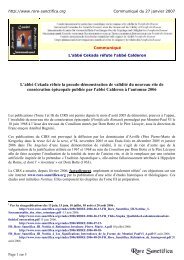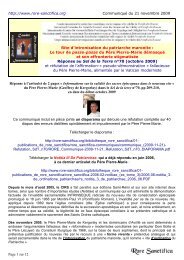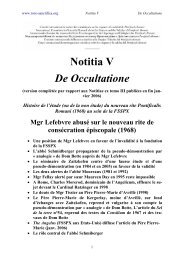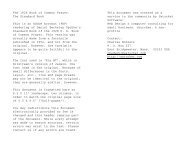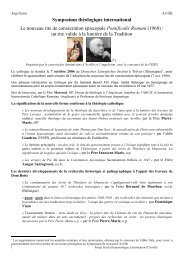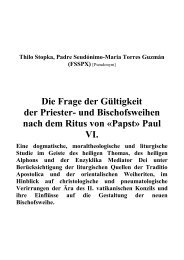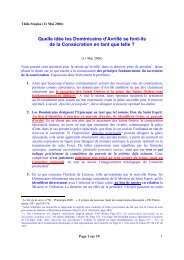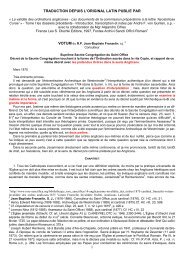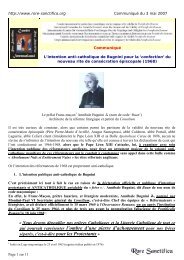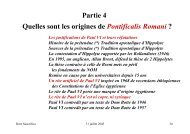Thilo Stopka - Texte aux redemptoristes «At a Glance - Rore Sanctifica
Thilo Stopka - Texte aux redemptoristes «At a Glance - Rore Sanctifica
Thilo Stopka - Texte aux redemptoristes «At a Glance - Rore Sanctifica
You also want an ePaper? Increase the reach of your titles
YUMPU automatically turns print PDFs into web optimized ePapers that Google loves.
Let’s consult Rahmani’s edition, page 31<br />
As you can see, Father, also Rahmani confirms the quam and not quem. How about the Syriac<br />
text? Did Denzinger and Rahmani make a mistake? I got it checked in the Suryoyo Online<br />
Forum of Gabriel Rabo, in charge of Syriac Church History at the University of Göttingen in<br />
Germany:<br />
"anhar w'oshud sakultonutho w taybutho hoy d-men ruhokh rishonoyo hoy<br />
d'ashlemt l-abrokh habibo yeshu' mshiho" (Text based on “The Synodicon in the<br />
Western Syriac Tradition”, Voobus, Louvain, 1975)<br />
The relative pronoun hoy in feminine gender is appearing twice. If there should<br />
be something which could confirm the quem instead, the second hoy must be<br />
replaced by haw, which is masculine gender.<br />
If you take the version of Assemani, the text is:<br />
anhar w'oshud 'law (over him) sakultonutho w taybutho hoy dmen<br />
ruhokh rishonoyo hoy d'ashlemt l-abrokh habibo moran (Our<br />
Lord) yeshu' mshiho<br />
The proper translation would be in both cases in Latin:<br />
„illumina et effunde (super eum) intelligentiam et gratiam, quae est e Spiritu tuo principali,<br />
quam tradidisti dilecto Filio (Domino nostro) Jesu Christo...“<br />
The queue of intelligentiam and gratiam is only changed between Rahmani and Denzinger.<br />
This does not change much, since created graces do not constitute Our Lord as Messiah, but<br />
11



